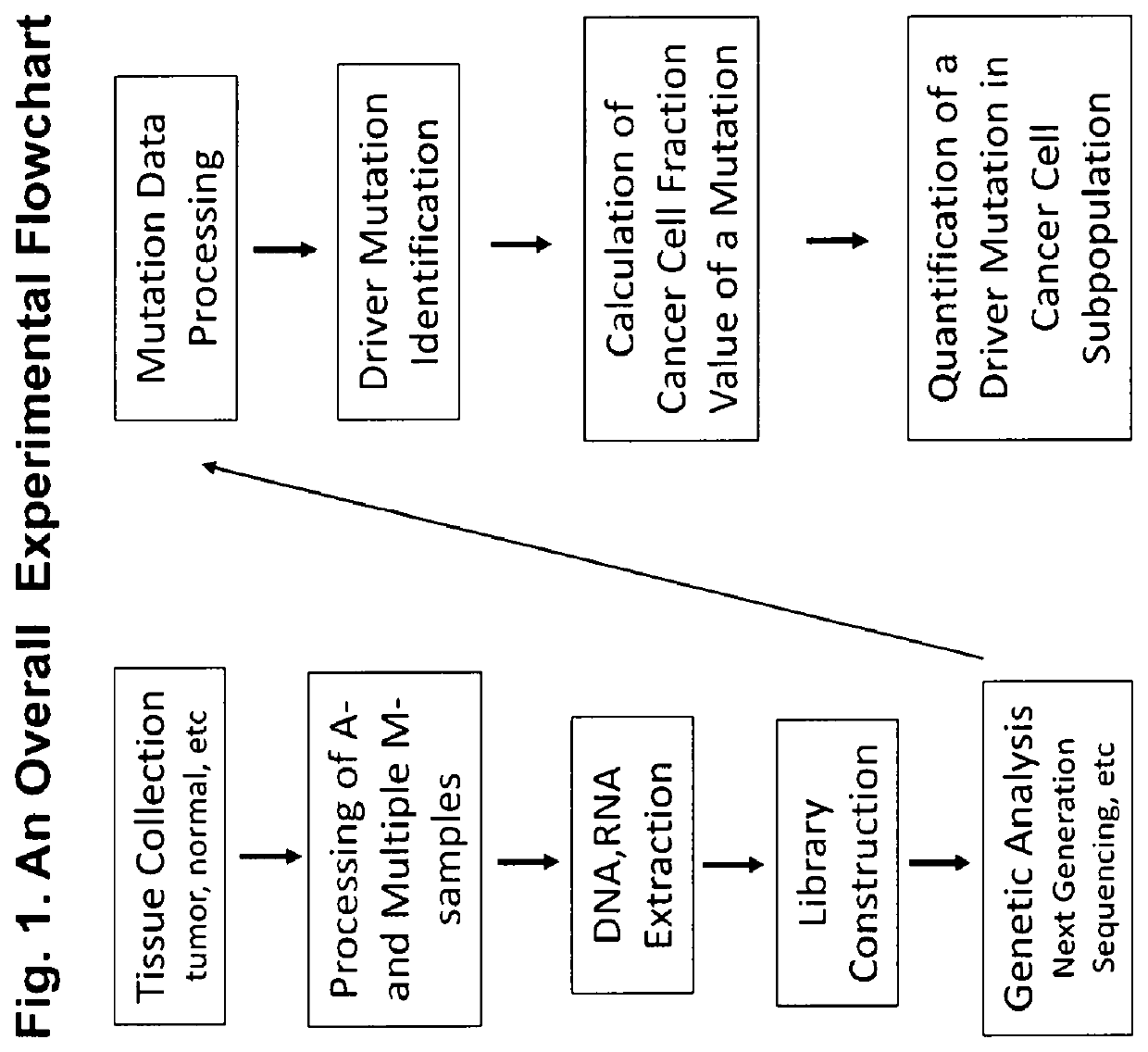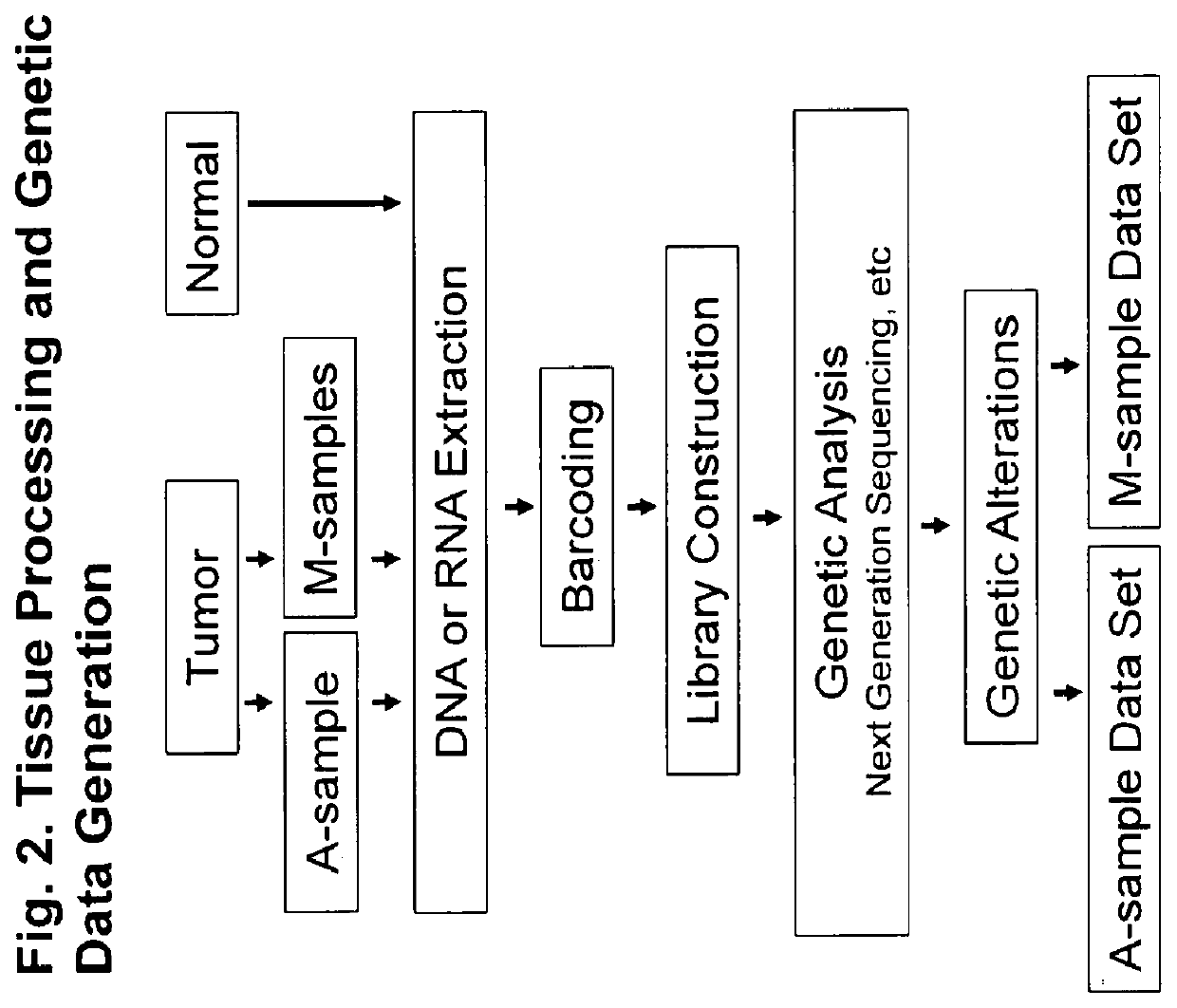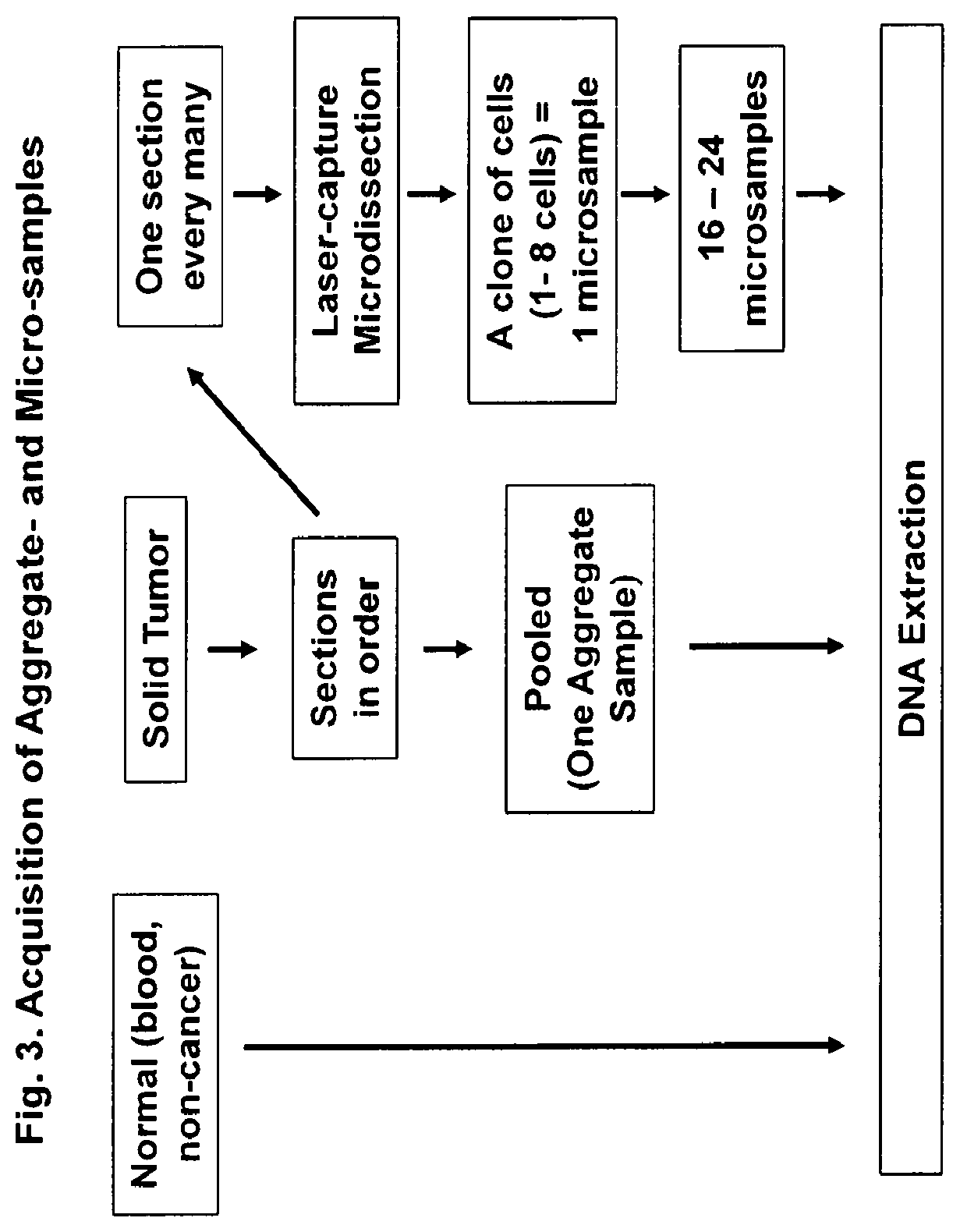Methods for identification of driver mutations in a patient tumor by mutation processing based reconstruction of tumor developmental history
a technology of tumor development history and mutation processing, which is applied in the direction of microorganism testing/measurement, biochemistry apparatus and processes, etc., can solve the problems of inability to directly examine and validate individual patients, lack of tumor progression detection methods, and ineffective current targeted therapies for most solid tumors. , to achieve the effect of reducing cancer mortality and morbidity, and improving treatment efficacy
- Summary
- Abstract
- Description
- Claims
- Application Information
AI Technical Summary
Benefits of technology
Problems solved by technology
Method used
Image
Examples
example 1
[0074]In certain embodiments, the method of invention comprises the following steps:[0075]1) The innovative method of simultaneous collection of multiple micro-samples (M-sample) and an aggregate sample (A-sample) (FIG. 3);[0076]2) Generation of A-sample Data and M-sample data set (FIG. 7);[0077]3) Quantitative interpretation of driver mutations in cancer subpopulations based on a tumor developmental tree;
[0078]A stepwise description of the method is given here.
[0079]Acquisition of a Human Tumor Specimen and Processing for Creation of Aggregate-Sample (A-Sample) and Multiple Micro-Samples (M-Samples).
[0080]A fresh primary tumor was acquired from an ovarian cancer patient at time of surgery. The normal tissue was from adjacent non-cancer tissue. Acquisition of micro-samples were obtained as illustrated in FIG. 3.
[0081]Briefly, the solid tumor was removed from the patient, and was sectioned. The tumor specimen had a size of approximately 5 mm×5 mm×5 mm. It was embedded in Optimal Cutt...
example 2
Quantitative Interpretation of Growth Advantageous Mutations in Cancer Subpopulations Based Upon a Tumor Developmental Tree
[0094]A tumor developmental history in the form of a developmental tree shows the history of cancer cells dividing to produce their next generation (FIG. 8). Letters, such as, A and B, are used to represent any unique mutations. The number following a letter estimates the size of descendants. The tumor developmental tree is expressed as a rooted and bifurcated tree with nodes and edges. Somatic mutations are located at the nodes and edges.
[0095]Step 1. Interpretation of the tumor developmental history. According to the tree, “A” mutation originally occurs at a cell producing 100% of cancer cell population in the A-sample. The cell where “A” mutation initially occur produces two cells that are ancestors of two subpopulations with 66% and 34% of total populations and mutations “B” and “C” originally occur.
[0096]Step 2. A mutation's CCF value indicates the percenta...
PUM
| Property | Measurement | Unit |
|---|---|---|
| mass | aaaaa | aaaaa |
| momentum | aaaaa | aaaaa |
| heterogeneity | aaaaa | aaaaa |
Abstract
Description
Claims
Application Information
 Login to View More
Login to View More - R&D
- Intellectual Property
- Life Sciences
- Materials
- Tech Scout
- Unparalleled Data Quality
- Higher Quality Content
- 60% Fewer Hallucinations
Browse by: Latest US Patents, China's latest patents, Technical Efficacy Thesaurus, Application Domain, Technology Topic, Popular Technical Reports.
© 2025 PatSnap. All rights reserved.Legal|Privacy policy|Modern Slavery Act Transparency Statement|Sitemap|About US| Contact US: help@patsnap.com



